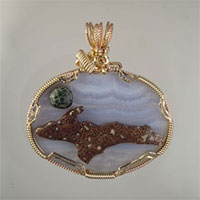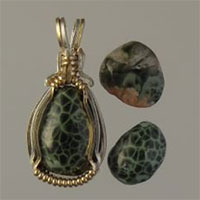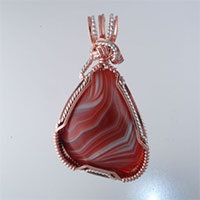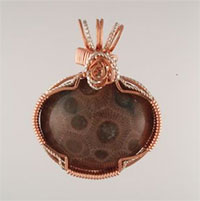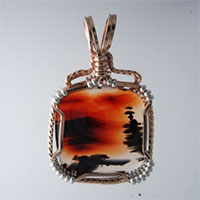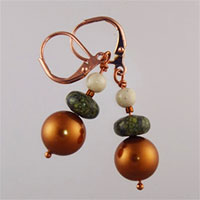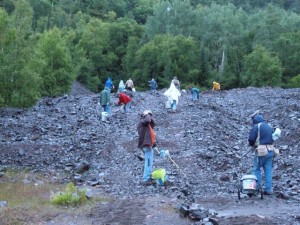
The hounds are released on the Cliff Mine Pile.
The pile was bulldozed and the Copper Country Mineral Retreat hunt at the Cliff Mine began at 9am. A good crowd of eager hunters attacked the pile. A nice trench was excavated and some entered it while others, like me hunted the surface. The Cliff, even though hunted for over a hundred years by rockhounds, still produces some fine copper specimens as well as other copper associated minerals. Native American Indians hammered this copper in prehistoric times, and chisel chips left from their mining are found at the Cliff today.
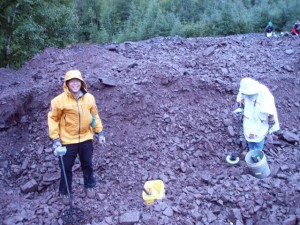
A nice trench was excavated and our buddy Keith from Baltimore found his way into it.
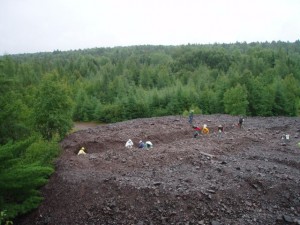
A great view of the Cliff mine showing the trench that fellow rockhounds were searching.
Since I already have so much native copper, Bonnie and I spent the day hunting for gem Prehnite for our jewelry. The Prehnite at the Cliff formed in small veins maybe a few inches thick and is apple green and speckled with copper. We were quite successful and found good pieces with some help from Pam Hecht who is a good buddy and led the hunt.
Prehnite comes in various forms and colors in the Copper Country. One of my favorites is referred to as “U.P. Thomsonite” and is verigated, often with eyes. Prehnite comes in assorted pastel colors, the most common being pink and green.
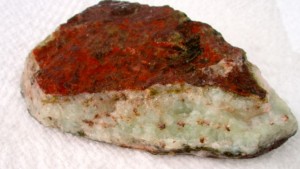
A seam of Copper bearing Prehnite from the Cliff Mine.
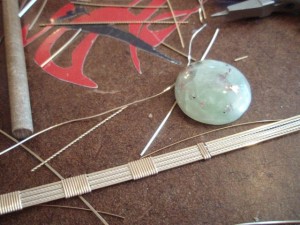
Here is some of that Prehnite on my workbench. Notice the copper?
The Cliff mine was the first successful copper mine in the Copper Country of the state of Michigan. The mine is at the now-abandoned town of Clifton in Keweenaw County. Mining began in 1845, and the Cliff was the most productive copper mine in the United States from 1845 through 1854. Large-scale mining stopped in 1878. The Cliff was a fissure mine where the seams of copper were vertical.
Fissure mines are always interesting to search. I spent the day looking for gem quality Prehnite, and Bonnie and I found many nice pieces. These veins of Prehnite are commonly no more then an inch or so wide with a split down the middle as the Prehnite formed in from the outside of the vein and met in the middle. Much of this Prehnite is loaded with specks of Copper and is a pleasing apple green color.
Although amygdaloid and conglomerate deposits of the Keweenaw tended to be lower-grade than the fissure deposits, they were much larger, and could be mined much more efficiently, with the ore blasted out, hoisted to the surface, and sent to stamp mills located at a different site. Amygdaloid and conglomerate mining turned out to be much more productive and profitable than fissure mining, and the majority of highly successful mines were on amygdaloid or conglomerate lodes. The first mine to successfully mine a strataform ore body was the Quincy Mine in 1856. The most productive deposit, the Calumet conglomerate, was opened by the Calumet and Hecla mining company in 1865. (Mine information from Wikipedia)
I’ll be excited to cut this Prehnite and make some attractive pendants.


